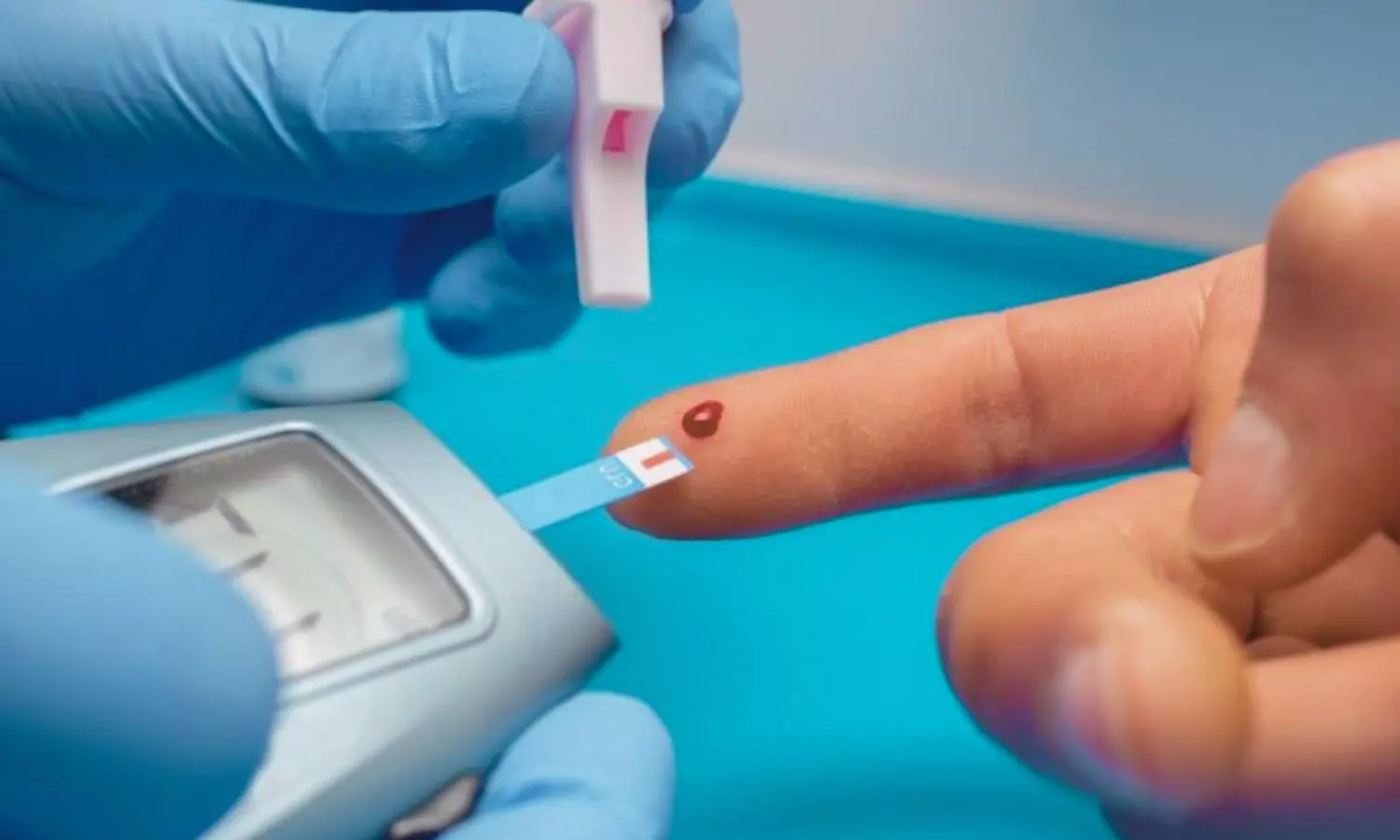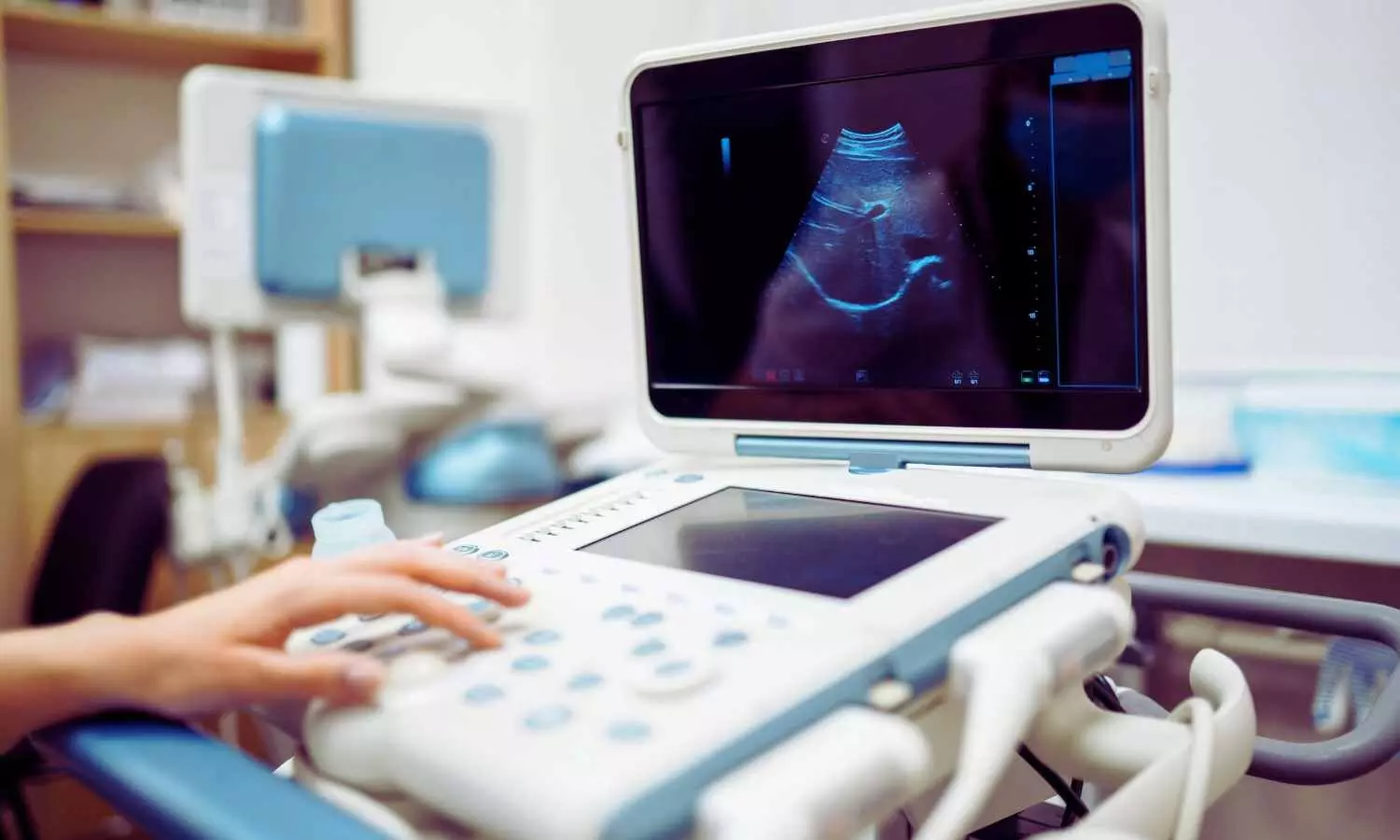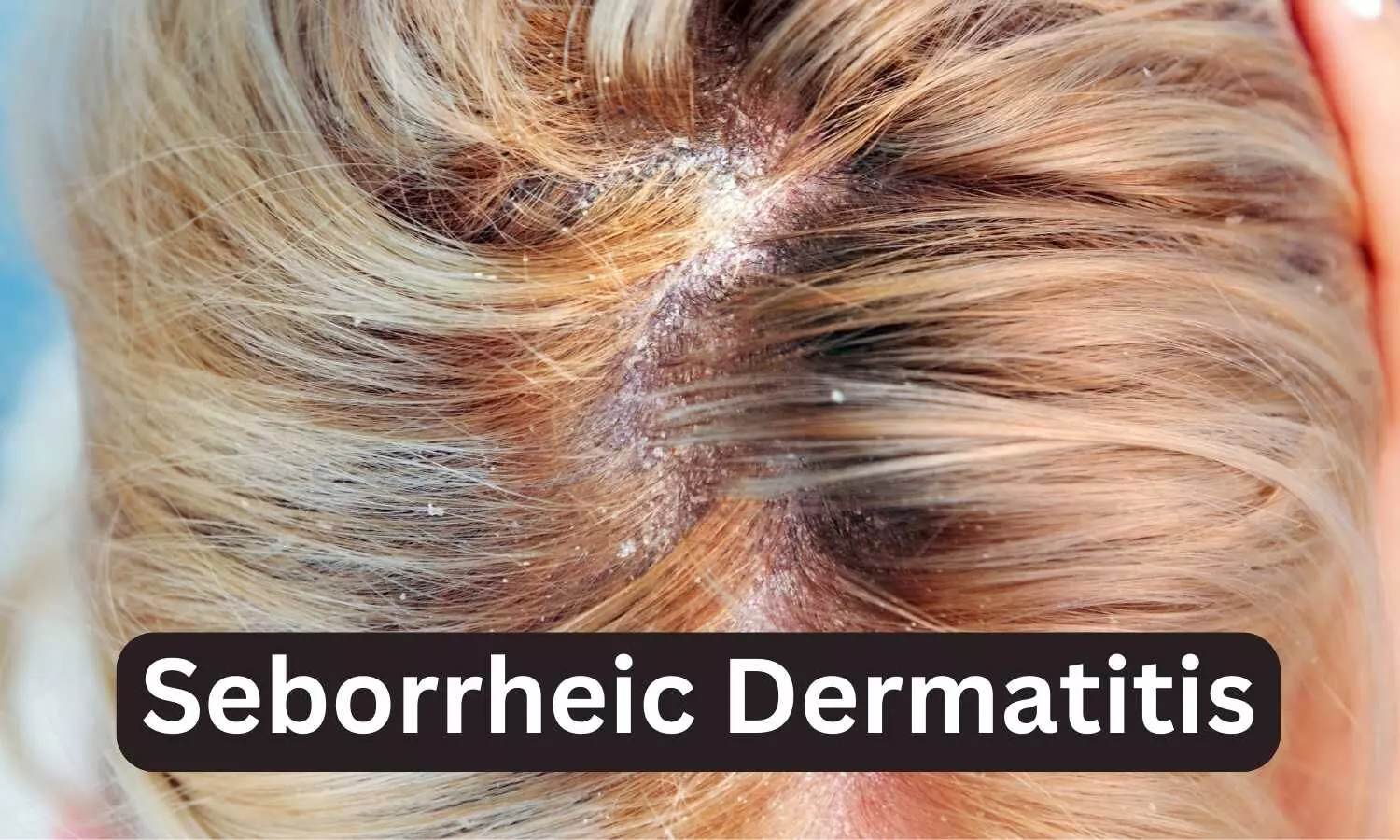Couple conceive with the help of an AI-guided sperm recovery method
Powered by WPeMatico
Powered by WPeMatico
Powered by WPeMatico
Powered by WPeMatico
Powered by WPeMatico
Powered by WPeMatico

A recent study published in the journal of Frontiers in Nutrition revealed that citrus flavonoids are promising ,safe and effective nutritional adjunct to metformin in early prediabetes management, offering benefits like improved postprandial glycemia, stable GLP-1 levels, reduced inflammation and oxidative stress, and modest improvements in body composition and blood pressure. However long-term studies are needed for confirmation.
Metformin, the first-line therapy for type 2 diabetes and prediabetes, is widely recognized for lowering blood glucose and improving insulin sensitivity. However, it can cause gastrointestinal side effects and may lose its effectiveness with long-term use. Studies are increasingly exploring natural agent as adjunct therapies to boost outcomes, reduce complications, and delay disease progression.
A12-week placebo-controlled trial tested whether a citrus bioflavonoid-based nutraceutical could complement metformin therapy. The participants were assigned to receive either metformin plus the supplement (250 mg/day) or metformin with placebo. This study then monitored a broad range of outcomes, including glucose control, inflammation, oxidative stress, hormonal responses, and nutritional-clinical indicators.
By the end of the study, participants in the nutraceutical group showed notable metabolic improvements when compared with the placebo group. These included a 5% reduction in two-hour glucose levels during the oral glucose tolerance test (OGTT) and preservation of active GLP-1 levels, which is a hormone critical for insulin secretion. In contrast, the placebo group experienced declining GLP-1 activity and rising insulin resistance.
The levels of TNF-α, an inflammatory cytokine, dropped by 12%, while plasma antioxidant capacity increased by 7.5%, suggesting enhanced defense against oxidative damage. The participants taking the supplement lost weight, reduced fat mass, and lowered their body mass index (BMI). Although the changes were modest, they were statistically significant, indicating real metabolic benefits.
The nutraceutical group experienced a 4% reduction in systolic blood pressure, which researchers linked to higher dietary potassium intake and strengthened antioxidant capacity.
Also, the results highlight the potential role of citrus flavonoids as a nutritional adjunct to metformin therapy in individuals with prediabetes. The benefits spanned across glycemic control, hormonal stability, inflammation, oxidative balance, and cardiovascular support. Overall, this study found short-term effects that are promising, longer trials are needed to determine sustained efficacy and mechanisms of action.
Reference:
Cesar, T., Oliveira, M. R., Sandrim, V., Mendes, A., Bruder, R., Oliveira, R., Sivieri, K., & Milenkovic, D. (2025). Citrus flavonoid supplement enhances glycemic and metabolic control in prediabetic patients on metformin: a randomized controlled trial. Frontiers in Nutrition, 12(1639901), 1639901. https://doi.org/10.3389/fnut.2025.1639901
Powered by WPeMatico

Frontline healthcare workers struggling with depression after the COVID-19 pandemic experienced significant relief from a treatment combining psilocybin group therapy with mindfulness training, according to a new study from Huntsman Mental Health Institute at University of Utah Health. Doctors and nurses who received this controlled, group psilocybin therapy along with an eight-week Mindfulness Based Stress Reduction program saw far greater improvements than those who only learned mindfulness techniques.
“Depression and burnout have long been serious problems for healthcare workers. When the pandemic only worsened these effects, we felt it was crucial to try something different to understand how we can help this group of individuals who are dedicated to helping others.”
Benjamin Lewis, MD Associate professor of psychiatry at University of Utah
The study, which originally appeared in PLOS Medicine, included 25 healthcare workers who worked directly with COVID patients and were battling both depression and burnout. A select group of healthcare workers were administered a single dose of psilocybin in a controlled clinical setting along with 8 weeks of mindfulness training while the other half completed the mindfulness training alone.
For those that were treated with the combination therapy, the group’s depression scores dropped by more than twice as much as the meditation-only group in addition to feeling less emotionally exhausted and more connected to themselves and others.
Nearly half (46%) of healthcare workers who received psilocybin alongside mindfulness techniques were free of depression at two weeks, compared to just 8% who only learned mindfulness practices.
Most psilocybin studies are expensive and hard to scale up as they use two therapists per patient with individual sessions. This study delivered treatment in groups instead, creating an easier path towards scaling and a more accessible option for healthcare workers looking for relief.
Reference:
Benjamin R. Lewis, John Hendrick, Kevin Byrne, Madeleine Odette, Chaorong Wu, Eric L. Garland, Psilocybin-assisted group psychotherapy and mindfulness-based stress reduction for frontline healthcare provider COVID-19-related depression and burnout: A randomized controlled trial, PLOS Medicine, https://doi.org/10.1371/journal.pmed.1004519
Powered by WPeMatico

Most parents can think back to the first ultrasound image they saw of their unborn child, and may even be able to remember what impression that image had on them. Would their child be an active toddler, a tad bit ornery or stubborn, sweet and cuddly, fiercely independent, or shy and cooperative? New research suggests these initial perceptions may have been formed, at least in part, in response to how the health care provider described the baby during the exam.
These prenatal care experiences play a large role in shaping how parents see their babies and, consequently, affect how parents relate to their children later on and how those children behave in return, according to new research from the University of Notre Dame.
“The ultrasound experience is such a salient, emotional part of the pregnancy overall, legitimizing the pregnancy itself and creating an opportunity for brand-new memories with the baby,” said Kaylin Hill, assistant professor in Notre Dame’s Department of Psychology and lead author of the study published in Communications Psychology, a Nature journal.
“The words used in these conversations with ultrasound technicians or obstetric sonographers — whom we consider experts on fetal development — get absorbed and influence who you think your child is before they’re even born,” Hill said. “Our research suggests the descriptions offered by prenatal care providers stick with parents. When we asked prospective parents to describe their baby, 70 percent of them indicated their perception was related to a prenatal care visit.”
The statements made by health care providers to expecting parents about their baby may have unintended consequences and “may play a role in influencing a child’s future,” the researchers wrote.
Prior research has found that if a parent views a child positively during pregnancy, the parent is more likely to engage in more positive parenting behaviors after the baby is born. For example, babies described with more positive words experience higher levels of sensitivity, warmth and engagement from parents. Those described with more negative words receive less.
Hill said her study is the first to show “these first impressions prospectively relate to childhood behavior as well, and not only parenting practices.”
The study, broken into two segments, first observed 320 pregnant mothers between 11 and 38 weeks’ gestation who provided a description of their babies, followed by a report on their children’s behavioral and emotional difficulties at 18 months old. Those parents who described their unborn children more positively observed that their child had fewer difficulties as a toddler. However, negative descriptions were associated with greater difficulties in the child’s behavior and in regulating their emotions.
Problem behaviors in the children included being emotionally reactive, experiencing anxiety or depression, having trouble paying attention, acting withdrawn, having trouble sleeping, acting aggressively and even complaining of various physical symptoms.
The researchers learned that descriptor words specifically attributed to the ultrasound experience tended to have a more negative emotional tone than those related to any other experience — such as talking about your baby with your spouse, family and friends, or comparing family characteristics between your baby and certain relatives.
“These interactions between prospective parents and prenatal care providers seem small,” Hill said. “Can single words really impact how parents perceive their unborn child to be?”
While this first segment of the study demonstrated differences in the tone of words attributable to prenatal care visits versus other sources, the second segment tested the researchers’ hypothesis that negative comments made during ultrasound exams actually lead to more negative parental perceptions.
They asked 161 participants to report on the personality of a baby following an imagined prenatal care visit in which they were randomly assigned to different exam conditions. In each instance, the ultrasound technician indicated that they were unable to capture the necessary images, but with three different explanations as to why. Some participants were told it was the baby’s fault for not cooperating during the ultrasound, others learned that technical issues caused the disruption, and the last group were simply told that they would get another chance to see their baby at a subsequent appointment.
Participants who were told that they would get to return for a follow-up appointment were much more likely to use positive words to describe the baby than participants in the other two conditions. Those who were told the failed image captures were because the baby was uncooperative used more negative words to describe the baby than participants in the other two conditions.
Evaluating the language used by health care professionals during these prenatal encounters is crucial in fostering positive parent-child relationships, according to the study’s findings, as well as educating medical and mental health professionals about the importance of prenatal and early childhood experiences. Equally critical is providing more support for both parents and children during the perinatal period (the time from pregnancy through the first year after childbirth).
“Of course we want to help support parents,” Hill said, “and this research suggests a first step may be to talk with health care providers, to highlight the importance of these seemingly small differences in word choice during salient moments with pregnant patients.”
Hill is an affiliate of Notre Dame’s Veldman Family Psychology Clinic and the director of the Psychophysiology of Affect across the Lifespan (PAL) Lab, which focuses on familial dynamics and mental health. She sees this study as one small, yet key, component of the whole picture of what makes for a healthy family. “Depression affects the entire family, and not just one person,” Hill said.
“One of the highest risk periods for depression is the perinatal period, where individuals are experiencing changes across so many levels of functioning — physical, psychological and social,” she said. “If an ultrasound experience is impacting how an individual sees their child, that could potentially influence aspects of the caregiving relationship, which is really important for both parent and child outcomes over time.”
Reference:
Hill, K.E., Blum, A.L., Carell, R. et al. Evidence that prenatal care visit experiences influence perceptions of the child. Commun Psychol 3, 73 (2025). https://doi.org/10.1038/s44271-025-00256-z.
Powered by WPeMatico

Researchers from the University of Turku and Turku University Hospital, Finland, led by Docent Sami Ventelä and Professor Jukka Westermarck, have identified a novel diagnostic tool that can revolutionize the treatment guidance of head and neck squamous cell carcinoma.
Their newly published study introduces an easy-to-use immunohistochemical assay for detecting the LIMA1-alpha protein, which reliably predicts whether patients can be cured with surgery alone-avoiding the need for harmful oncological treatments.
Surgery remains a cornerstone in the treatment of solid tumors, including head and neck squamous cell carcinoma. However, there has been no clinically available method to distinguish patients who can safely avoid additional therapies such as radiation or chemotherapy. These treatments can cause substantial side effects, additional costs and reduce quality of life.
The research team’s main findings included analyzing patients with newly diagnosed head and neck squamous cell carcinoma at all five university hospitals in Finland in a prospective clinical study. They found that high expression of the LIMA1-alpha isoform predicted poor survival following surgery, while patients with LIMA1-negative tumors had excellent outcomes without requiring further therapy. Strikingly, none of the LIMA1-negative patients in the prospective validation cohorts died of head and neck squamous cell carcinoma during 2-year follow-up.
“Our findings suggest that immunohistochemical detection of LIMA1-alpha can serve as a reliable and cost-effective tool for identifying patients who could be cured with surgery only and thus spared from the burden of multimodal treatments,” says Docent Ventelä. “This kind of stratification is long overdue and needed in head and neck cancer care.”
Using antibodies specific to the LIMA1 isoforms, the researchers demonstrated the assay’s prognostic power across retrospective, population-validated tissue microarrays and two independent prospective cohorts. The results were consistent and robust, showing that LIMA1-alpha was the only biomarker to significantly predict poor outcomes in surgically treated patients.
In addition to clinical data, mechanistic studies revealed that LIMA1 drives epithelial–mesenchymal transition and enhances cancer invasiveness-providing a biological explanation for its link to poor prognosis.
Currently, only two biomarkers-p16 and PD-L1-are in widespread clinical use for head and neck squamous cell carcinoma , and both have serious limitations in stratifying treatment for early-stage disease. This new LIMA1-alpha assay represents the first clinically translatable biomarker for selecting patients who may benefit from surgery alone.
“We trust that this can mark a turning point in personalized head and neck cancer care,” says Docent Ventelä. “We envision that LIMA1 testing will be incorporated into routine diagnostic workflows in head and neck squamous cell carcinoma to guide treatment planning from the outset.”
The study offers a promising step toward more personalized and less toxic treatment strategies for patients suffering from head and neck cancer. The University of Turku has applied for patent protection for the findings and based on them, a cancer diagnostics start-up company, Thestra Oy (https://thestra.fi), has been founded, which aims to bring the test to patient use under the EPLINEx™ brand later this year.
Reference:
Xi Qiao, LIMA1-alpha staining predicts curative intent surgery response in HPV negative head and neck cancer, EMBO Molecular Medicine, https://doi.org/10.1038/s44321-025-00266-8
Powered by WPeMatico

USA: A large-scale study published in Allergy, the official journal of the European Academy of Allergy and Clinical Immunology, has uncovered a strong bidirectional association between seborrheic dermatitis (SD) and several epithelial barrier diseases (EBDs).
Powered by WPeMatico
